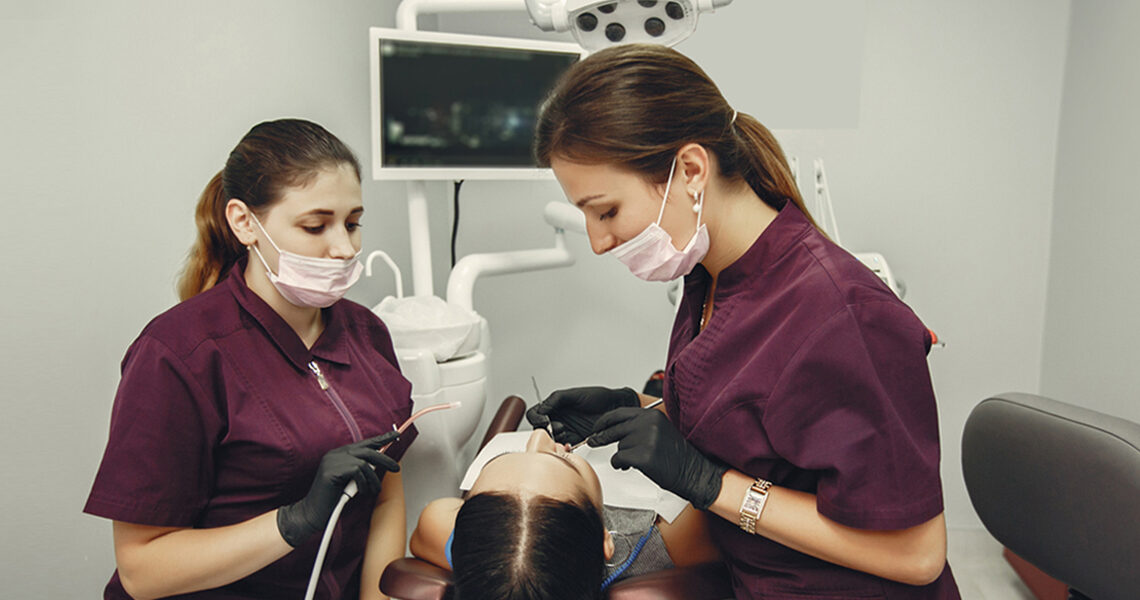Healthy gums are essential for a strong, and lasting smile. They support your teeth, protect underlying bone, and keep harmful bacteria in check. But when gum health begins to decline, it often happens quietly—without immediate pain or obvious symptoms. People looking for answers often wonder what to expect and what is the best periodontal treatment for gum health.
Understanding the Role of Periodontal Care in Oral Health
Periodontal care focuses on the prevention, diagnosis, management, and treatment of gum-related conditions. When plaque and tartar build up along the gum line, it irritates the tissue and causes inflammation. If left untreated, this inflammation can progress into gum disease—affecting both soft tissue and the bone that holds your teeth.
There are three stages of gum disease:
- Gingivitis: Reversible with proper care
- Mild to Moderate Periodontitis: Requires professional intervention
- Advanced Periodontitis: May lead to tooth loss if not treated
Regular cleanings and at-home hygiene may help prevent issues, but when symptoms develop, professional periodontal treatment near me becomes essential.
How to Know If You Need Periodontal Treatment
Many people don’t realize they have a gum problem until it has already advanced. Here are early signs you shouldn’t ignore:
- Bleeding when brushing or flossing
- Red, swollen, or tender gums
- Persistent bad breath
- Gums pulling away from teeth
- Loose teeth or changes in bite
If you notice any of these symptoms, it’s important to visit a dentist in Temecula, CA, who can evaluate the severity and recommend the right care. Early detection prevents complications down the road.
Deep Cleaning and Scaling Explained
For those in the early to middle stages of gum disease, a deep cleaning—also called scaling and root planing—is often the first step. It removes bacterial plaque and tartar from below the gum line and smooths the tooth root to help the gum reattach more securely.
This non-surgical treatment may be done in sections over multiple appointments. It’s typically performed under local anesthesia to keep you comfortable during the process. Healing begins almost immediately, with reduced inflammation and less bleeding.
Patients who follow home care instructions after this treatment often see improved gum health within weeks. Many patients who receive care through periodontal dental services in Temecula, CA, find that early action leads to better long-term results.
Are There Surgical Options?
When gum disease has progressed significantly, non-surgical methods might not be enough. In those cases, your dentist or specialist may recommend a surgical procedure to remove bacteria and damaged tissue more effectively.
These options may include:
- Flap surgery to clean deep pockets around the teeth
- Bone grafting when the jawbone has deteriorated
- Soft tissue grafting to cover exposed dental roots and rebuild gumline
- Guided tissue regeneration to promote bone and tissue healing
Each case is different, so your treatment plan depends on the extent of damage and your individual health history.
Benefits of Ongoing Periodontal Maintenance
Once periodontal therapy has been completed, maintenance becomes critical. Your local dentist will likely recommend more frequent cleanings to keep gum disease from returning.
Here’s why ongoing care matters:
- Prevents bacteria from recolonizing beneath the gums
- Reduces the risk of tooth loss
- Protects the underlying bone structure
- Improves breath and reduces inflammation
- Helps you avoid future costly procedures
In fact, people who commit to regular follow-up visits often keep their natural teeth longer than those who do not.
What to Expect During Periodontal Appointments
Every visit starts with an exam. Your dentist will check for pocket depth around your gums, inflammation, plaque buildup, and any signs of recession. X-rays may be used to monitor bone loss.
The cleaning is more detailed than a regular dental visit, focusing on removing bacteria below the gum line. You may also receive a localized antibiotic treatment or prescription rinse to manage infection.
Most people report little discomfort afterward, especially when they follow instructions on oral hygiene at home.
Home Habits That Support Healthy Gums
Keeping your gums healthy between appointments is just as important as professional care. A few everyday practices go a long way:
- Brush twice a day with a soft-bristled dental brush.
- Floss at least once daily to remove stuck food and plaque.
- Use an antibacterial mouth rinse if recommended.
- Avoid tobacco products, which worsen gum problems.
- Eat a balanced diet with vitamin C and calcium.
Staying consistent keeps inflammation down and your smile healthy.
Is It Ever Too Late for Periodontal Treatment?
Even in advanced stages, treatment can help stabilize the condition and prevent further loss. While lost bone or gum tissue may not fully grow back, modern periodontal therapies can stop progression, restore comfort, and make it easier to maintain good oral hygiene.
Patients treated at Elevate Dental Temecula often say they feel more confident and healthier once their gums are under control—even if treatment came later than they would have liked.
The important thing is not to wait. Taking action sooner always leads to better outcomes.
Final Thought
Gum health plays a vital role in preserving your smile, preventing tooth loss, and supporting overall wellness. The best periodontal treatment for you depends on your specific needs, but early detection and consistent care are key. Whether through deep cleaning or surgical intervention, there are proven methods to manage gum disease and protect the structures that keep your teeth in place.
Start with awareness, follow through with the right care, and don’t skip routine maintenance. Your gums will thank you for it.


